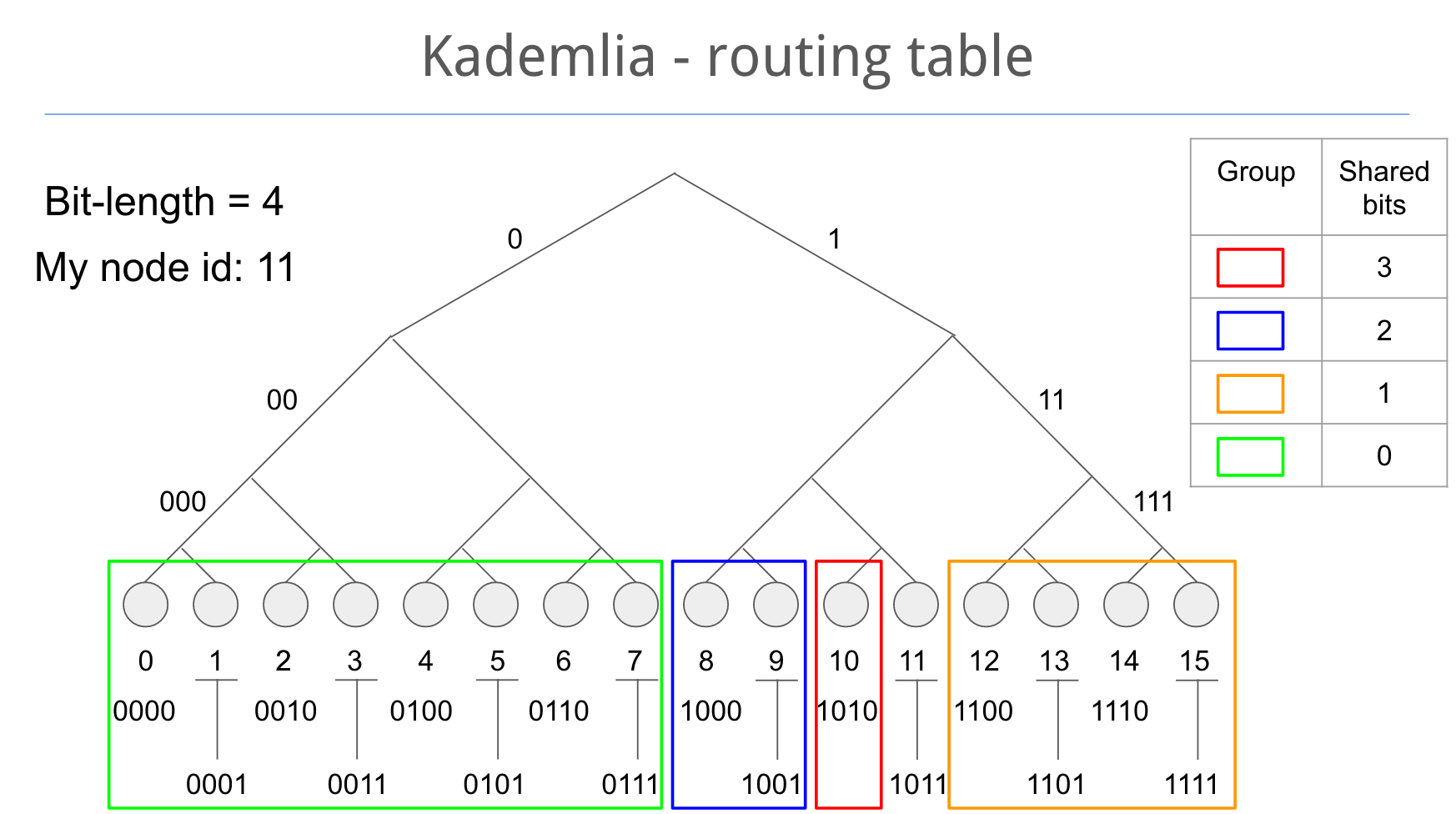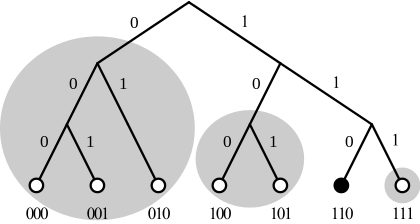Kademlia Routing Table Prefix
For an m bit prefix there will be 2 1 k buckets. Classless inter domain routing cidr receives a packet with address 1312315176.
Secure Kademlia Covenantsql Research Wiki Github
A the network addresses of different entries may overlap in forwarding table.

Kademlia routing table prefix. Groups of bits can be placed in k buckets. Lets see how the forwarding engine uses the information from the routing table to make forwarding decisions. The group of bits are termed a prefix.
Represents how many prefix bits are shared between nodes in the row and the table id. A routing table consists of buckets and nodes are stored in these buckets. Exactly how the routing table is organized depends on the p2p network algorithm.
Instead a peer routing table contains references to a subset of peers in the network. The structure of the kademlia routing table is such that nodes maintain detailed knowledge of the address space closest to them and exponentially decreasing knowledge of more distant address space. The routing table is a binary tree whose leaves are k buckets.
Each node is identified by a unique key the distance between nodes is defined as xor of their keys. It is easier to implement but has some shortcomings. The routers routing table has the following entries.
However since each of these routes has a different prefix length subnet mask theyre considered different destinations and they will all be installed in the routing table. The novelty of the kademlia algorithm is the xor metric it uses. Groups of bits can be placed in k buckets.
Routers forward the incoming packet to the router which hash the longest prefix matching with the incoming packet. It is somewhat different from other documents regarding kademlia routing table where buckets are arranged in accordance to the bit prefix of the node id but there is another confusing thing. Kademlia stores nodes it knows about in a routing table.
The xor metric allows kademlia to extend routing tables beyond single bits. For an m bit prefix there will be 2 m 1 k buckets. The group of bits are termed a prefix.
The missing k bucket is a further extension of the routing tree that contains. The xor metric allows kademlia to extend routing tables beyond single bits. A list of all the nodes in the row sorted by their id.
Xor distance based routing table used for p2p networks such as a kademlia dht. The bittorrent specification describes a routing table implementation that only approximates the one described in the kademlia paper. In this text i will only show you how chord and kademlia organizes their routing tables as i find these systems to be more a little more elegant than pastry and tapestry.
Https Www Cs Helsinki Fi U Sklvarjo Overlay2016 Overlay6 Dht 2 Pdf
Secure Kademlia Covenantsql Research Wiki Github

Plaxton Routing Systems Pastry Tapestry And Kademlia Pastry
Peer Routing Table
2 Architectural Overview Swarm 0 5 Documentation

Xorro P2p Xorro P2p

Kademlia Wikipedia

Elastos In A Nutshell Carrier Network Part 3 Of 3 Cyber
Peer Routing Table